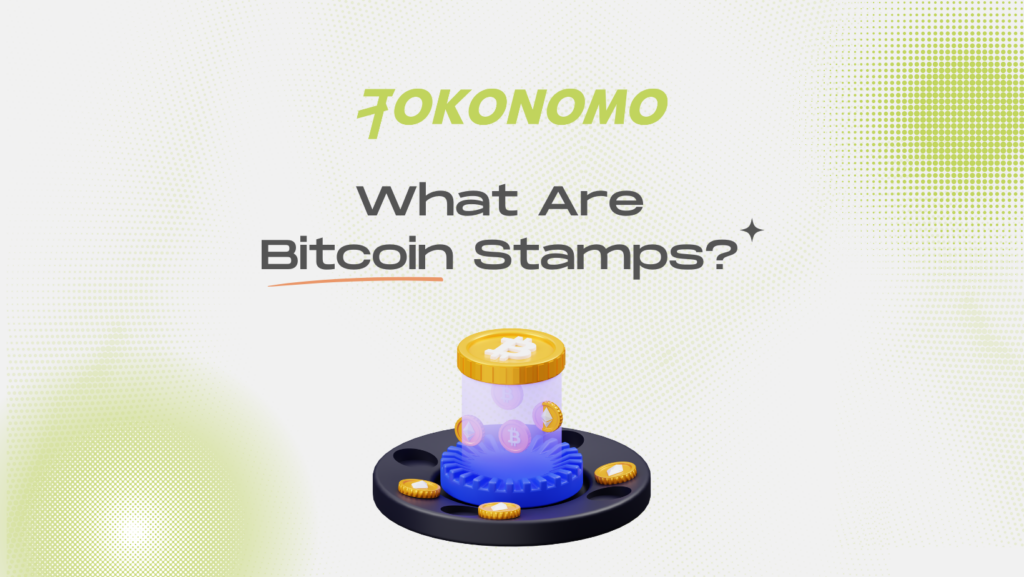Bitcoin has evolved to support various applications beyond its original purpose, including adding extra data to transactions. The Bitcoin STAMPS protocol improves this feature, building on earlier technologies like the Ordinals protocol. This article explores Bitcoin Stamps, explaining their function and differences from Bitcoin Ordinals.
What Are Bitcoin Stamps?
Bitcoin Stamps serve as an innovative means of incorporating digital artwork into the Bitcoin blockchain ecosystem. They utilize unspent transaction outputs (UTXOs) to encode data, thereby guaranteeing its immutability by securely embedding it within the blockchain.


How Bitcoin Stamps Work?
A Bitcoin Stamp is generated by converting a digital artwork into a base64 string, which is then integrated into a Bitcoin transaction, identified with the prefix “STAMP:”. This information is distributed across multiple outputs through multi-signature transactions, guaranteeing the perpetual recording of digital artwork on the Bitcoin blockchain.
Every Bitcoin Stamp is assigned a unique identifier derived from the timestamp of the transaction, facilitating orderly organization. To gain official acknowledgment, a Stamp must adhere to specific criteria, such as being included in the initial transaction containing a valid “STAMP:base64” string.
Bitcoin Stamps Protocols
The two primary protocols commonly utilized within Bitcoin Stamps are SRC-20 and SRC-721.
- SRC-20, the token standard, is constructed atop the open Counterparty protocol, offering the unique feature of embedding arbitrary data within spendable data transactions, in contrast to Ordinals, which confine data solely to the witness section.
- SRC-721 introduces a cost-effective solution for crafting intricate NFTs by leveraging the Bitcoin STAMPS protocol. This standard efficiently stores images in layers, employing techniques like indexed color palettes for individual layers to minimize file size. These layers seamlessly merge into a unified NFT, facilitating the generation of premium-quality images without significant expenditure.
Bitcoin Stamps vs. Bitcoin Ordinals
Bitcoin Stamps and Bitcoin Ordinals represent innovative inscription technologies integrated into the Bitcoin blockchain. These unique features enable users to append supplementary information onto the Bitcoin network, yet they employ disparate methodologies, highlighting their distinct approaches.
Data Pruning
Bitcoin Ordinals preserve crucial information by storing it as witness data within a distinct section of a transaction block. This witness data undergoes potential alteration by a blockchain node, achieved through a process recognized as data pruning. Conversely, the Bitcoin STAMPS protocol integrates image data directly into unspent transaction outputs (UTXOs). Consequently, artworks digitized through Bitcoin STAMPS are immune to pruning, thereby upholding their immutability.
Data Size and Cost
Bitcoin Stamps provide creators with the versatility of storing data flexibly, enabling them to utilize images starting from a resolution of 24×24 pixels or higher. Nevertheless, opting for larger images escalates the data volume, thereby possibly elevating transaction expenses for the Stamp. Conversely, Bitcoin Ordinals restrict the embedded data size, aligning it with the Bitcoin block size. This limitation on image resolution ensures uniform transaction charges while curbing adaptability.
Signature Type
Bitcoin Stamps are inherently crafted with a robust multi-signature framework, significantly bolstering data security. In contrast, Bitcoin Ordinals rely on a system structured around single signatures.
Conclusion
Bitcoin Stamps represent a groundbreaking approach to embedding digital artwork within the Bitcoin blockchain, thereby guaranteeing its integrity and immutability. Diverging from Bitcoin Ordinals, constrained by block size and single-signature transactions, Bitcoin Stamps provide enhanced adaptability in data size and fortified security via a multi-signature framework.











